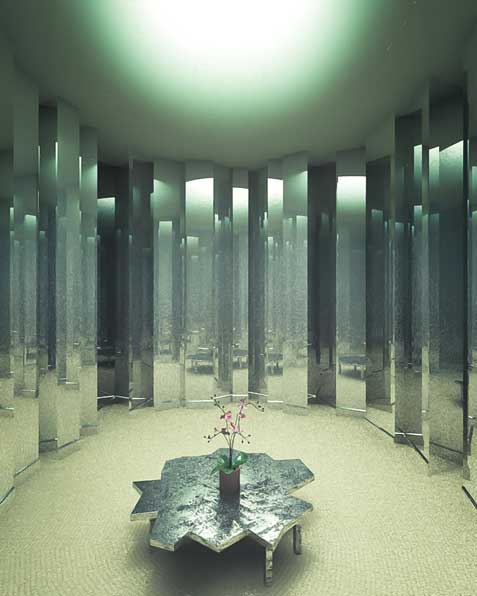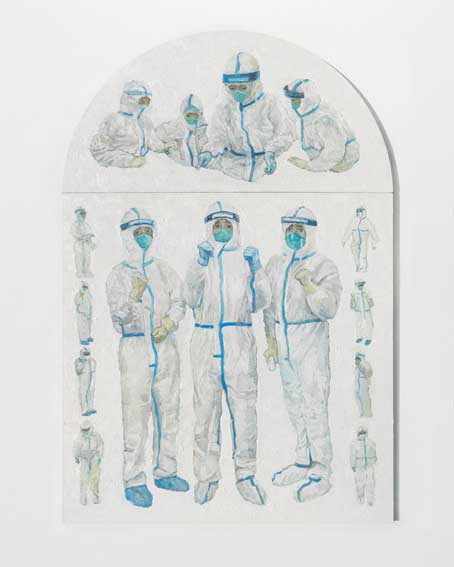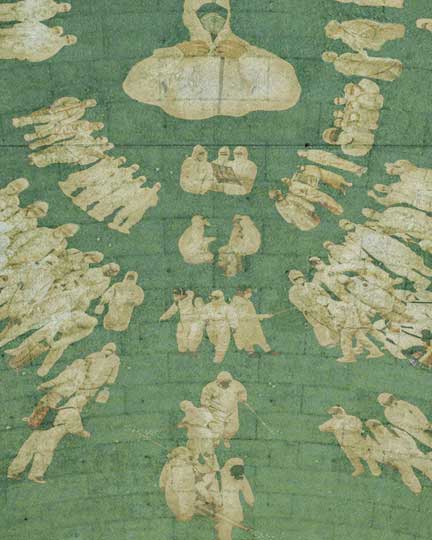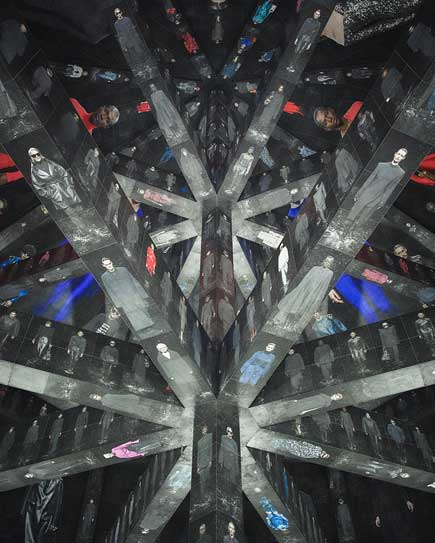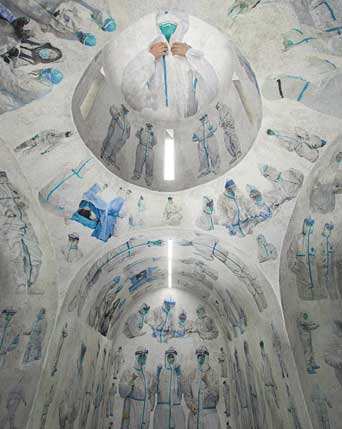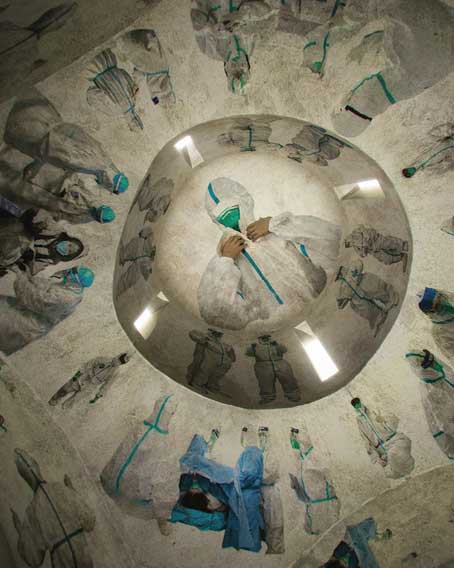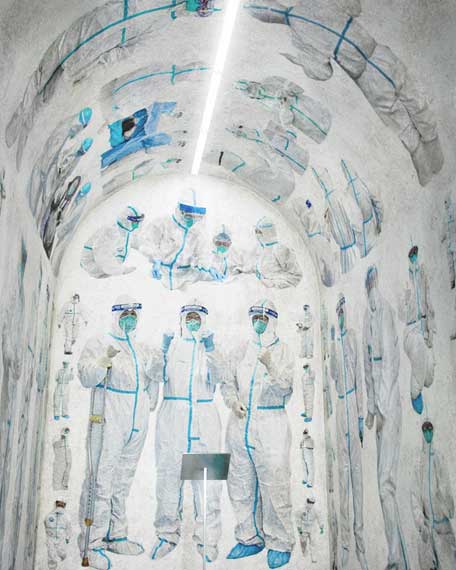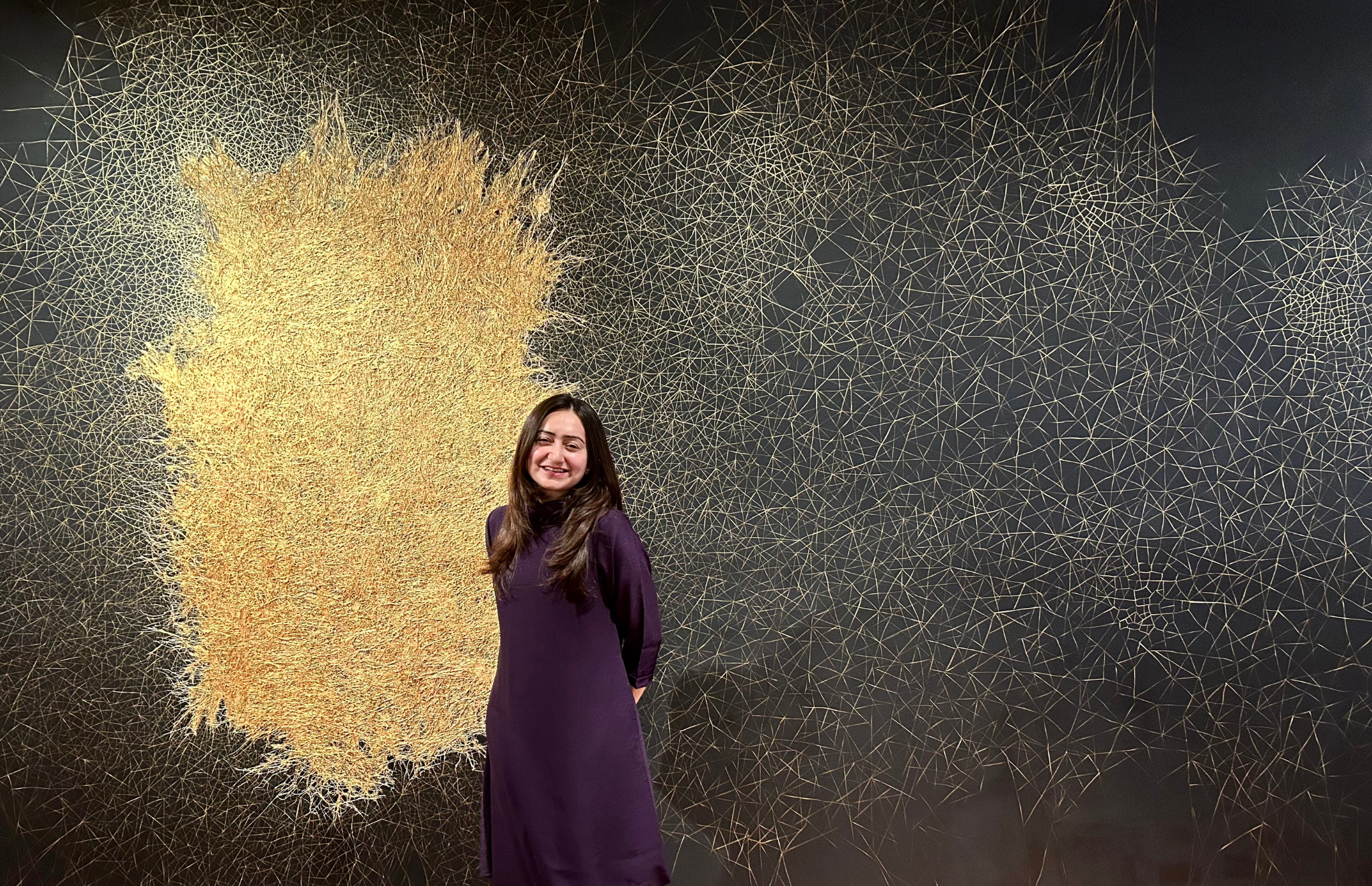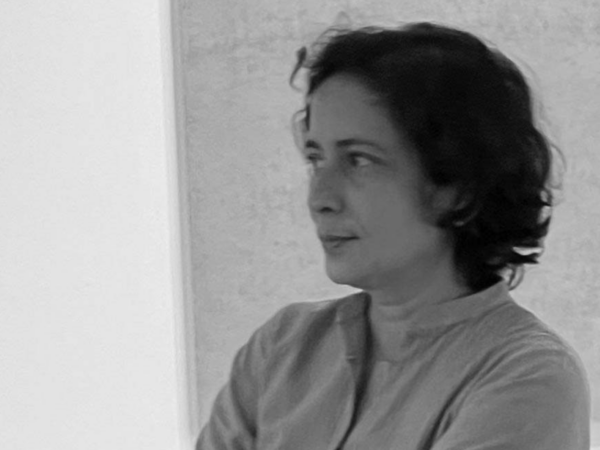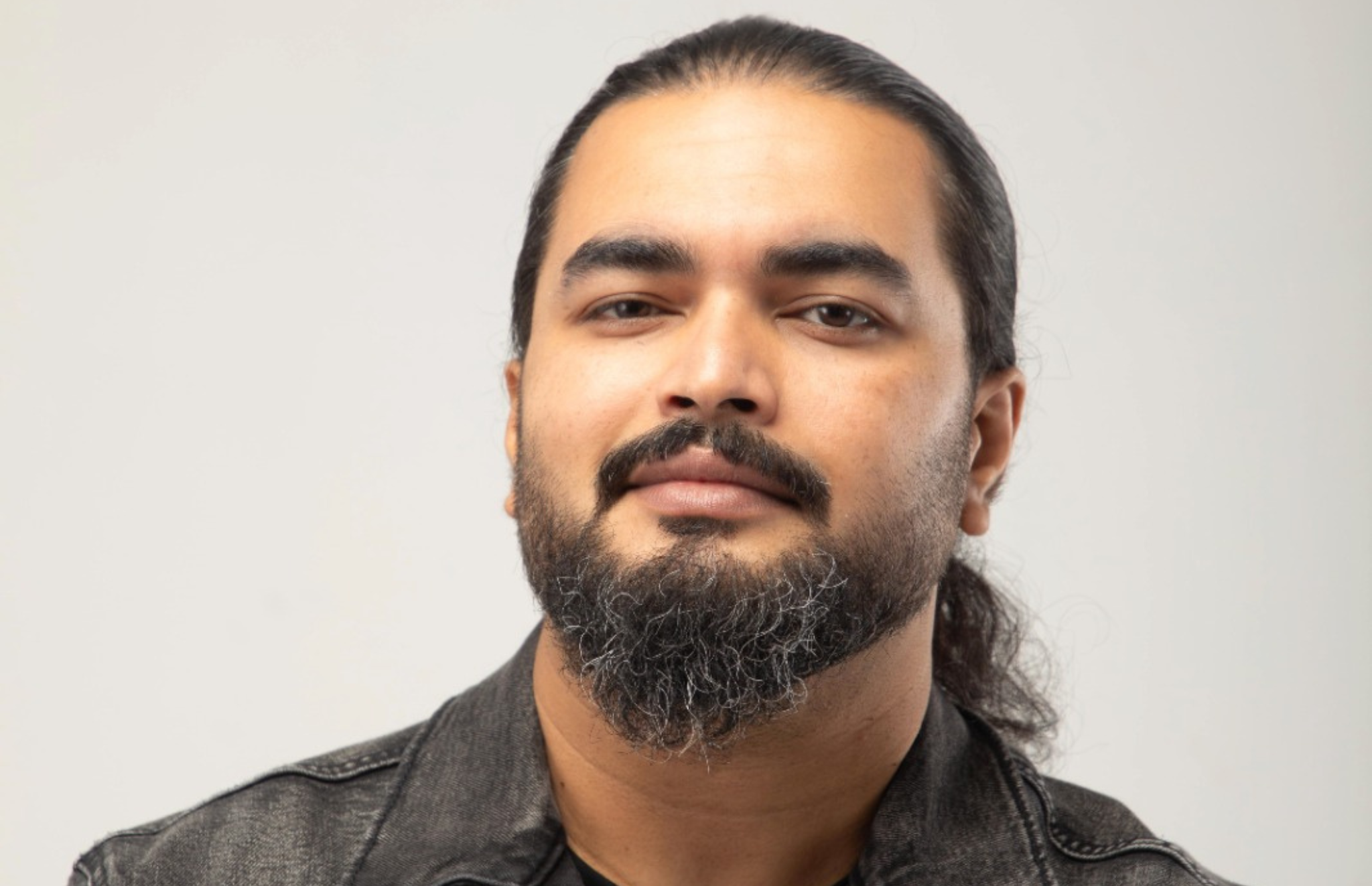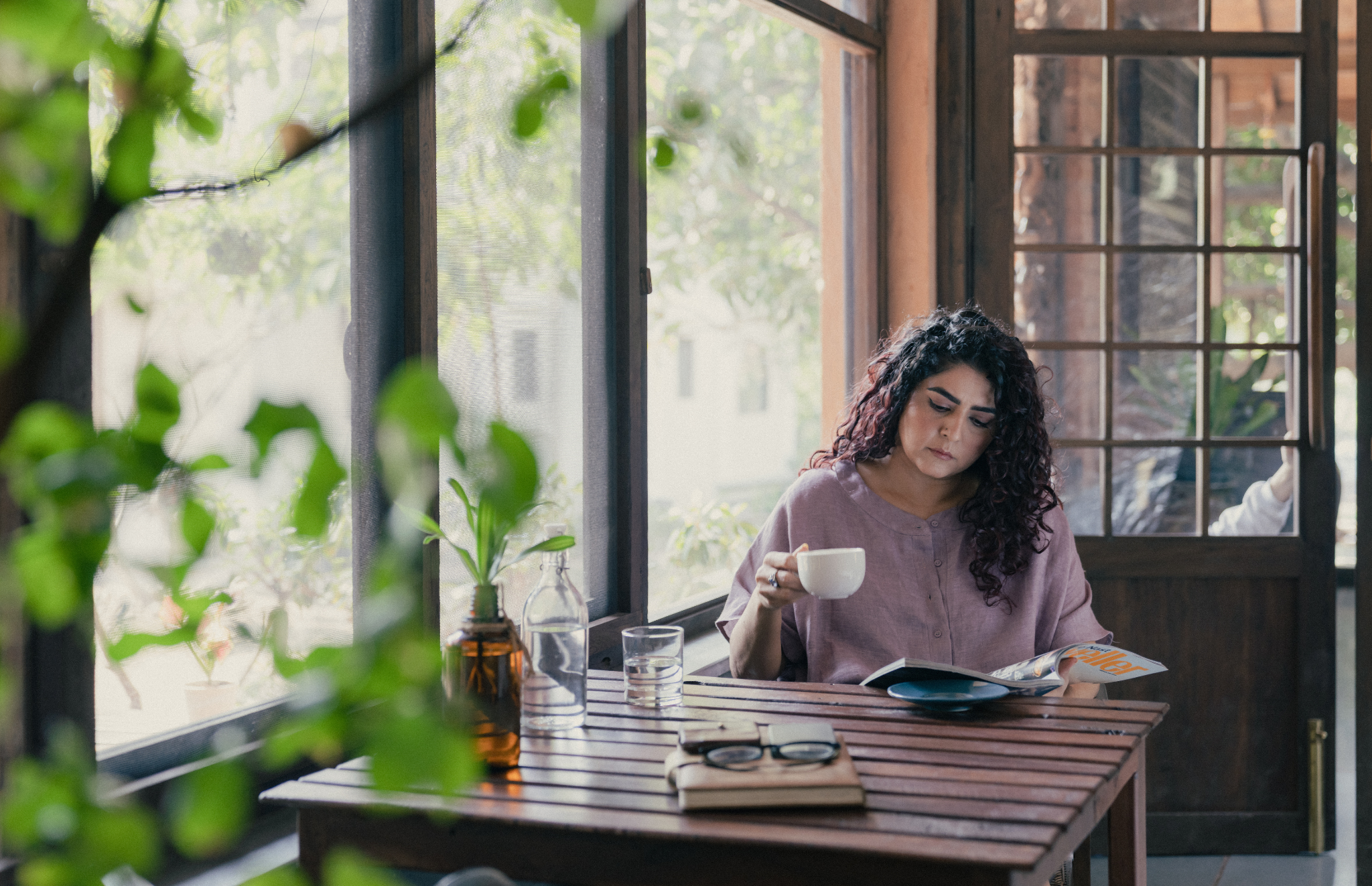Duyi Han is an architect, artist and a designer. His recent series ‘The Saints Wear White’ has received worldwide acclaim. He applies a scenographic approach to architecture, art and objects.
SP: Tell us about your latest project.
DH: Recently I am working on the interior design of a hotel-apartment in Changzhou, China, and a few rendering-based artistic projects. I am excited about this interior design, because it would transform a few of my recent ideas from rendered image to physical space. The apartment would have a series of rooms, each containing a different scene, threaded by a central idea based on mutated walls. Aesthetically, it would feel classically Chinese and fantastical at the same time, and I intend to not directly use any Chinese cultural symbols in hard furnishing.
I am fortunate to be in a position like a creative director, working with a local architecture firm. This allows me to have a more focused artistic and conceptual commitment than a regular interior designer, and I am able to develop a kind of interior environment that nobody has made before. Hopefully this project, once done, would be able to accept reservations on platforms such as Airbnb.
I am also on a scene design project for an online designer furniture show “Inside~Out” hosted by New York’s furniture design studio, Kin & Company. I am developing a series of large group renderings for more than 40 furniture items. The initial idea of the renderings is about recovering and regrowth, which relates to COVID-19. The show has been delayed due to the Black Lives Matter movement. Now we’re working on deciding a final date.
SP: How has your personal history, background and education affected your profession as an artist/designer?
DH: Being an architect had been a very clear dream since I was in kindergarten. Drawing imagined buildings and cities on little pieces of paper. My family is not very familiar with art and design, so perhaps this is a reason that I developed my imagination – to think and feel free. I studied architecture at Cornell University in New York. I also worked at the architecture office Herzog & de Meuron in Switzerland. One of my work projects was a Danish hospital. I designed interior environments such as ICU rooms and birth rooms. To me, a hospital is a place where people pause thinking about unimportant things and reflect on the essential things of life and death. A well-designed environment in a hospital could positively respond to patients’ emotions and feel very healing and loving. It could give enormous power to people who are in fear of disease and death. The experience of designing it also makes me feel healed. As I learned this from the hospital project, I see my chapel mural as a similar exercise that warms the heart of people who are in fear and gives them strength in overcoming the crisis together. The hospital project, and many other experiences, enabled me to see the potential of architecture in evoking emotion. And I wanted to push this direction as far as I can, creating not just architecture, but in an expanded realm in art.
SP: Your works tread on the fine line between art and design, is this deliberate or it comes with the flow?
DH: A creative individual is able to create architecture, design, art – things in different media. If Michelangelo did both buildings and paintings (frescoes), then I can do different media too, as long as my world context allows me. When I was exploring my creative voice through university and job, it gradually became clear to me, that my creative and artistic potential is focused around creating the feeling of beauty in a perceptual environment. And a perceptual environment includes different things: a room, an object, an image, etc. So for me, scenography would be a close summary, but not accurate though. The kind of work like “The Saints Wear White” speaks to my creative voice. The line between art and design isn’t in my consideration. I think this line today is affected by capitalism to a large degree. I believe that expressing my idea effectively is the priority.
SP: Your works are also colossal in size, which enhances the impact of the work. Are there any inspirations or artworks or artists in this regard that have influenced your choices?
DH: I can be inspired by some very different kinds of artists and works. I feel moved by enormous ancient Egyptian temples and also shoes by Gucci. When I look at Hieronymus Bosch’s Garden of Earthly Delights, I am struck by the amount of visual stimulation looking at the whole triptych. I also find numerous tiny details of the human figures and animals very intriguing. Maybe because I was trained in an architecture school, I feel I can work comfortably on any scale, and still keep my personal voice in the work.
SP: Tell us about your process of conceptualising any project.
DH: Since my art and design philosophy is about creating form and content that evoke emotion, my conceptualization process is closely positioned around this cause-result relationship. When I start my current interior design project, I have exploratory conversations with the client in order to find the intended aesthetic feeling. I then work backward to create interior architectural forms and shapes that could evoke the intended feeling. But the process is not linear. I may have to slightly adjust the intended feeling in my mind to fit the new form, and then slightly adjust the form to maybe make it more expressive, and work back-and-forth several times, until I am happy about the form-emotion relationship. During the whole process, I look at many examples and references, and try many options.
Images Courtesy: Duyi Han
More about the artist:


